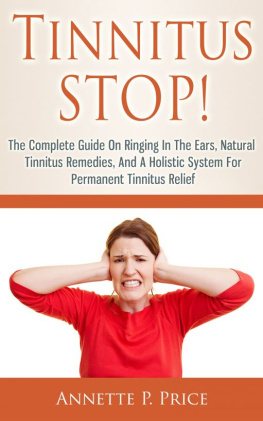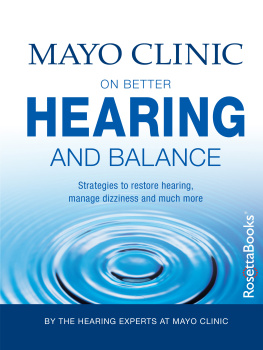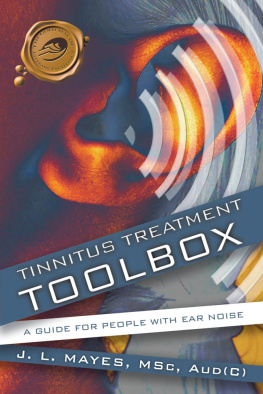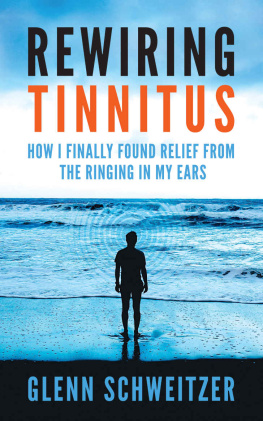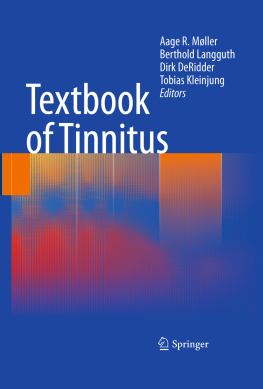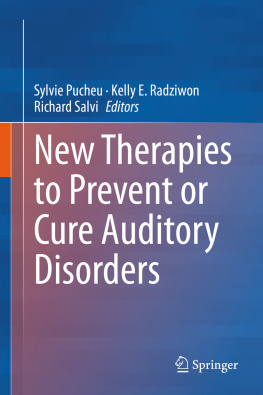Tinnitus No More
The Complete Guide on Tinnitus Symptoms,Causes, Treatments, & Natural Tinnitus Remedies to Get Rid ofRinging in Ears Once and for All
Brian M. Lawrence
Copyright 2013 by Brian M. Lawrence
Smashwords Edition
Tinnitus No More
Copyright 2013. All Rights Reserved.
Warning: The unauthorized reproduction ordistribution of this copyrighted work is illegal. No part of thisbook may be scanned, uploaded or distributed via internet or othermeans, electronic or print without the authors permission.Criminal copyright infringement without monetary gain isinvestigated by the FBI and is punishable by up to 5 years infederal prison and a fine of $250,000. (http://www.fbi.gov/ipr/).Please purchase only authorized electronic or print editions and donot participate in or encourage the electronic piracy ofcopyrighted material.
LEGAL NOTICE
The Publisher has strived to be as accurateand complete as possible in the creation of this report,notwithstanding the fact that he does not warrant or represent atany time that the contents within are accurate due to the rapidlychanging nature of the Internet.
While all attempts have been made to verifyinformation provided in this publication, the Publisher assumes noresponsibility for errors, omissions, or contrary interpretation ofthe subject matter herein. Any perceived slights of specificpersons, peoples, or organizations are unintentional.
In practical advice books, like anything elsein life, there are no guarantees of income made. Readers arecautioned to rely on their own judgment about their individualcircumstances and act accordingly.
This book is not intended for use as a sourceof legal, business, accounting or financial advice. All readers areadvised to seek services of competent professionals in the legal,business, accounting, and finance fields.
The information in this book is not intendedor implied to be a substitute for professional medical advice,diagnosis or treatment. All content contained in this book is forgeneral information purposes only. Always consult your healthcareprovider before carrying on any health program
Table of Contents
Tinnitus issometimes called ringing of the ears and occurs when a sound isperceived by the ear with no external sound to go with it. Tinnitusis a common problem. Everyone has had episodes of brief or mildringing in the ears but some people have it on a continual, chronicbasis. It is estimated that about 10-15 percent of otherwise normaladults will have prolonged episodes of tinnitus that require adoctors intervention or a natural remedy for the disease. Mostpeople troubled with tinnitus are between 55 and 65 years ofage.
As mentioned, tinnitus is common. When, inone study, participants were placed in an extremely quiet, anechoicroom (without echoes), up to 93 percent of these people actuallyheard tinnitus even though they didnt complain of it under naturalcircumstances. These findings suggest that, in Western,industrialized countries, some damage because of noise is morecommon than most people think.
No one knows the exact cause of tinnitus. Itis believed to be more of a symptom of another disease than anactual disease in and of itself. There are many causes of tinnitus,which will be discussed in later chapters. Tinnitus, fortunately,is not dangerous but it can cause impairment in hearing and isannoying enough to negatively affect a persons life.
People can develop tinnitus just by virtue ofgetting old as it can affect the aging ear. Certain medications cancause tinnitus to occur. The greatest cause, however, of tinnitusis excessive noise trauma to the ear.
The biggest problem with tinnitus is that itis completely subjective, meaning that only you can hear it. Othersdo not hear the sound and doctors often cant find any pathology inthe ear to explain why you are hearing the unusual noise. Objectivetests, such as audiometry testing, are often normal and dont helpthe doctor make any better decision about the diagnosis ortreatment of the disease.
Some people experience tinnitus in just oneear, while others experience it in both ears. Most people say theyhave a ringing noise in the ear(s) but some people describe it asa whistling sound, a buzzing sound, a beeping sound, or awhooshing sound as if hearing a loud wind or the sound of oceanwaves. Still others will hear actual tunes in their head fromtinnitus.
People can get tinnitus on an intermittentbasis or on a continuous basis. If one tilts the jaw, changes theshrugging of the shoulders or the tilt of the head, the tinnituscan change in quality and in amount. Even eye movements can changethe tinnitus.
Tinnitus is often associated with a degree ofloss of hearing as well as a loss in the range of frequenciesheard. Most of the time, if there is a hearing loss, it is greatestin the frequency range that the phantom noise is heard at. Becauseof this phenomenon, doctors feel that the cause of the tinnitus isrelated to the responsiveness of the auditory nerves of the dorsalcochlear nucleus in the ear. They, for some reason, becomehyperactive to compensate for an actual hearing loss.
People with tinnitus can hear the unusualsound as a very quiet sound, not overcoming sounds heardexteriorly. In others, the sound can be so loud that it interfereswith the hearing of true external sounds. This can be particularlyannoying because the sounds a person wants to hear are basicallyinaudible. There are people with tinnitus that suffer from extremeirritability, tiredness, musical hallucinations, and clinicaldepression because of the severity of their hearing problem.
Thereis one part of the ear that everyone sees. It is called the outerear and is visible on everyone. It is connected to the middle earthrough the external auditory canal with the tympanic membrane orear drum separating the external auditory canal from the threebones in the middle ear. The small bones are designed to amplifysound so it can be heard easily by the inner ear. The three bones,also called ossicles, include the malleus, the incus and thestapes. Inside the inner ear is the cochlea, which takes soundand turns it into neurological signals that are picked up by theauditory nerve and sent to the brain for processing.
While the processes of taste, smell andvision have chemical reactions as part of their function, the actof hearing is purely mechanical. In this chapter, we will look athow mechanics plays a role in hearing and how sound from theexternal world reaches the brain in the interpretation of thesound.
Sound is produced when waves vibrate throughmatter, such as the air or through water. Air is not a voiditcontains gaseous molecules that participate in the vibration thatcauses sound. If we breathed in a vacuum, sound would not be ableto travel and we could not hear. Even solid objects vibrate whentriggered to make sound. When, for example, you cause a bell toring, you can see the vibration of the edges of the bell when itrings.
Sound is the process of compression whenone particle collides with particles in front of it so that pushessound forward. When the corresponding back flash of sound happens,the air pressure is decreased, resulting in a process known asrarefaction. Sound, then is fluctuating air pressureseries ofcompression and rarefaction activitiesthat are picked up asdifferences in pitch. When the sound vibrates quickly, the pitch ismuch higher than when the sound vibrates slowly.
The normal ear needs to do three differentthings in order to hear sound. First, sound must be directedtoward the part of the ear that hears. Next, fluctuation of airpressure must be sensed by the middle ear. Finally, thefluctuations must be turned directly into an electrical signal thatis understood by the brain.


